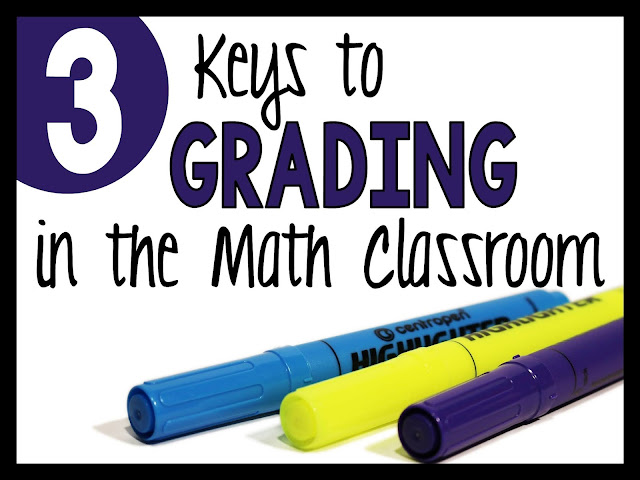Grading in the Middle School Math Classroom
Grading in my math classroom is something that I change to try and improve every year. My system is not perfect but I have learned some important aspects that I believe can benefit other teachers.
Focus on Growth
First, your grading system should focus on growth while still holding students accountable to minimum standards. High students measured on a growth system will progress significantly more than if they are only measured on reaching standards. Low students will also progress more through a growth-based system because they will not get discouraged and give up which often happens through an achievement-based system. Setting up a growth based system in your math classroom can be difficult. Some ideas are allowing for retakes on exams after remediation. Expecting your higher students to reach higher standards. There should never be a ceiling for standards in your classroom. There should always be room for growth. In math, you don't necessarily need to push students to the next grade level mathematics. Instead of further, think deeper. Have the students dig down into the core of mathematics. This will definitely get them thinking critically.Set Minimum Standards
Second, you should set minimum standards that all students can and need to reach by the end of the year. You can set this standard by thinking about what is absolutely necessary for your students to know in order to be successful on the next level. You should not require mastery until the end of the year. Students progress at various rates and you should account for that in your grading system. In my school we have what are called "non-negotiables." We have 5-7 "non-negotiables" for each subject/grade. These are standards that every single student needs to reach by the end of the year in order for them to be successful at the next level. A great way to set "non-negotiables" is to talk with the teacher that teaches the next level and ask them what does every single student need to know coming into your classroom in order to be successful. They will be able to guide you in thinking about these minimum standards.
Knowledge not just Accountability
Third, the majority of the grade should reflect knowledge and not just accountability. Accountability can definitely be weaved into your system, and it may need to be to motivate students. However, accountability should have a significantly less weight on a grade than knowledge. For that is your primary purpose as a teacher, help students acquire knowledge.
Change is OK
One last thought, don't be afraid to change your system in the middle of the year if your system is not working. No need to wait it out until the end of the year. I have changed a couple times in the middle of the year, I was really worried. I took the time to talk to my students, explain why what we were doing wasn't working, and the plan moving forward. They were really receptive, in fact more receptive than I even expected.
I would love to hear how you grade in your math classroom.










